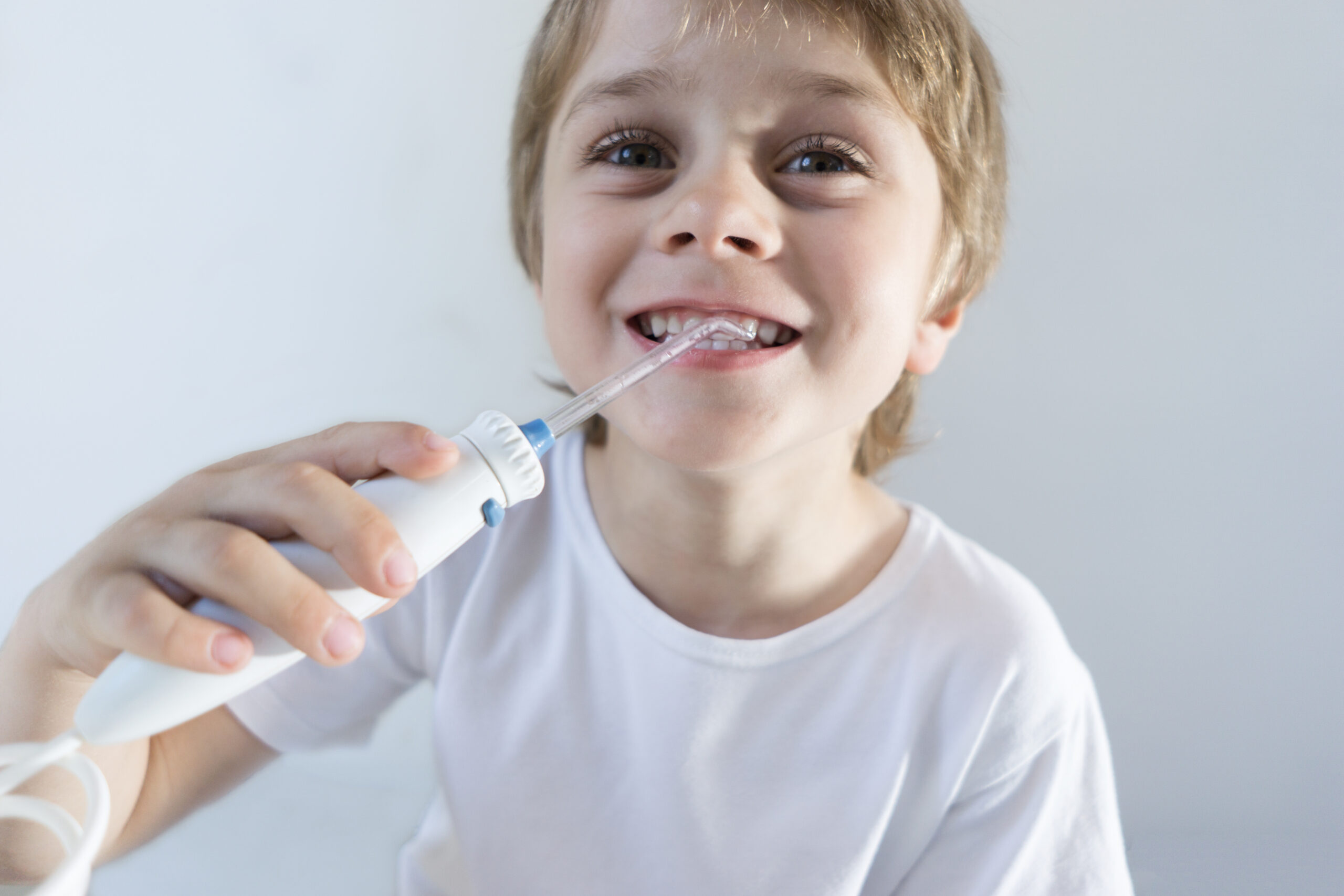Oral Irrigators vs. Traditional Flossing: What’s Best for Your Teeth?
Today, we’re tackling a question that many of our patients at Erin Mills Smiles Dentistry ask: “Should I use an oral irrigator or stick with traditional flossing?” Both methods are popular for cleaning between teeth, but understanding their differences and benefits is key to determining what’s best for your oral health. Let’s dive into the world of oral irrigators and traditional flossing to help you make an informed decision.
Understanding Traditional Flossing
Traditional flossing has been a cornerstone of oral hygiene for decades. It involves using a thin piece of string, typically waxed or unwaxed, to remove food particles and plaque from between the teeth and below the gum line.
Benefits of Traditional Flossing:
- Effectiveness: Floss is incredibly effective at removing plaque and food particles from tight spaces between teeth.
- Precision: It allows for targeted cleaning, as you can maneuver the floss to reach specific areas.
- Affordability: Dental floss is widely available and inexpensive.
- Ease of Use: Once you get the hang of it, flossing is quick and easy.
Drawbacks:
- Some people find flossing difficult, especially those with limited dexterity.
- Flossing incorrectly can sometimes cause minor bleeding, especially if the gums are not used to it.
- It can be challenging to reach certain areas, like the back teeth.
Exploring Oral Irrigators
Oral irrigators, also known as water flossers or dental water jets, use a stream of pulsating water to remove food particles, bacteria, and plaque from between teeth and below the gum line.
Benefits of Oral Irrigators:
- Ease of Use: They are particularly useful for people with braces, dental implants, or other dental work that makes traditional flossing difficult.
- Gentleness: Water flossers are gentle on the gums and can be beneficial for those with sensitive gums or periodontal disease.
- Effectiveness in Cleaning Braces: They can easily clean around brackets and wires.
- Fun Factor: Some people find water flossers more enjoyable to use, which can encourage regular use.
Drawbacks:
- Oral irrigators are more expensive than traditional floss.
- They require electricity and water, which can limit their portability.
- While effective at removing larger food particles, they might not be as effective as traditional floss at removing plaque.
Comparing Effectiveness
Both traditional flossing and oral irrigators are effective at cleaning between teeth, but they work differently. Traditional floss physically scrapes off plaque and food particles, while water flossers rinse these areas. Studies suggest that while water flossers are excellent for reducing gingivitis and gum bleeding, traditional flossing is slightly more effective at removing plaque.
Who Should Use What?
The choice between traditional flossing and using an oral irrigator often comes down to personal preference, specific dental needs, and lifestyle.
- Traditional Flossing is a great option for most people, especially those who are looking for an affordable and effective way to clean between their teeth.
- Oral Irrigators are ideal for people with braces, those who have difficulty with manual dexterity, or those who find traditional flossing painful or challenging.
Best Practices for Both Methods
Regardless of the method you choose, the technique is crucial for optimal results.
For Traditional Flossing:
- Use about 18 inches of floss, winding most of it around your fingers and leaving an inch or two to work with.
- Gently slide the floss up and down between your teeth and curve it around the base of each tooth, making sure you go beneath the gumline.
For Oral Irrigators:
- Fill the reservoir with warm water and choose the appropriate tip for your needs.
- Lean over the sink and place the tip in your mouth. Turn on the water flosser and close your lips enough to prevent splashing, while allowing water to flow out of your mouth into the sink.
- Aim the tip at the gum line and work your way around your mouth.
Incorporating Into Your Oral Hygiene Routine
Both traditional flossing and water flossing can be effectively incorporated into your daily oral hygiene routine. The best approach is the one that you will consistently use and that meets your specific oral health needs.
Erin Mills Smiles Dentistry: Here to Help
At Erin Mills Smiles Dentistry, we understand that every smile is unique. Our team is dedicated to providing personalized care and advice, whether it’s helping you choose between traditional flossing and an oral irrigator or offering tips for optimal oral hygiene.
Ready to Take the Next Step?
If you have questions about oral hygiene techniques or it’s time for your regular dental check-up, contact Erin Mills Smiles Dentistry today. We’re here to ensure you get the best care for a healthy, beautiful smile. Remember, taking care of your teeth is an investment in your overall health!

